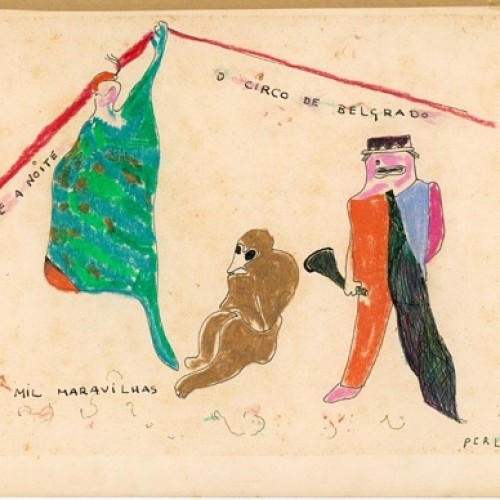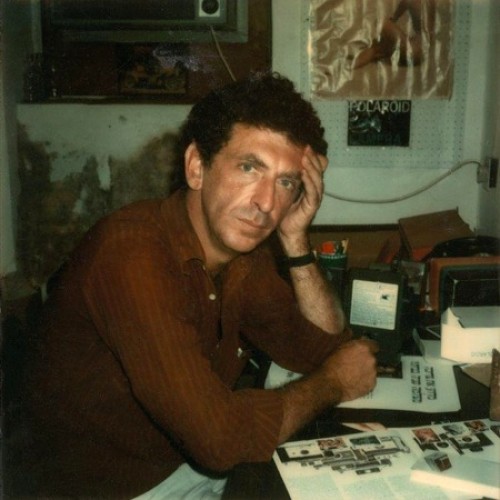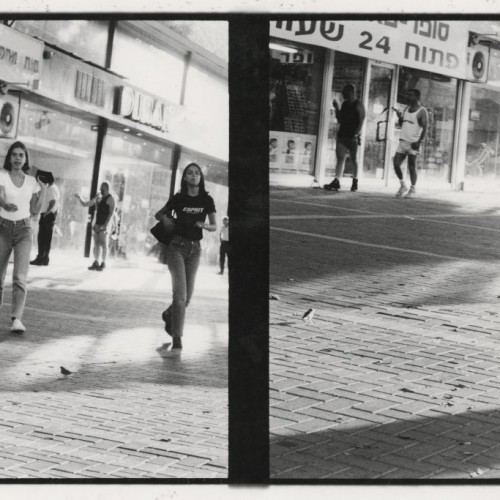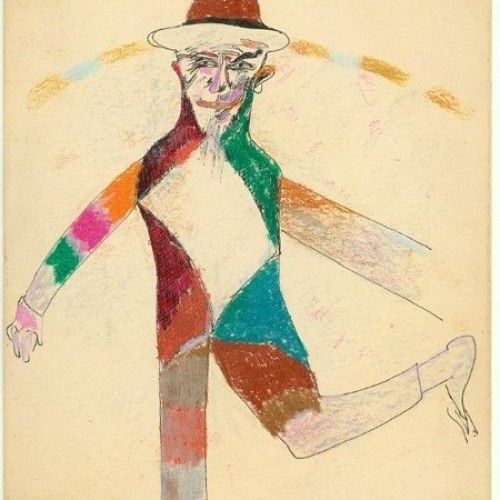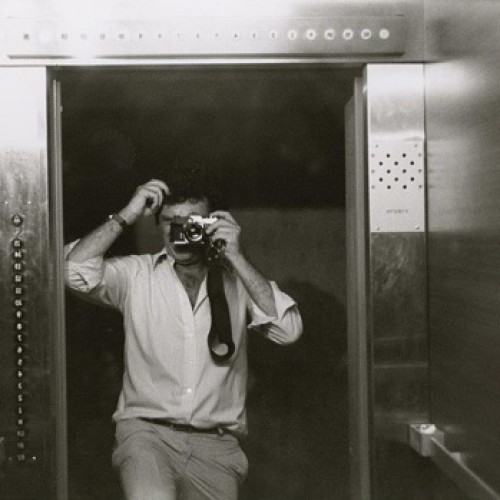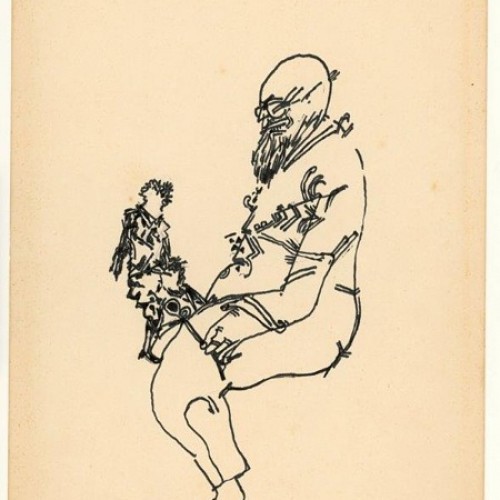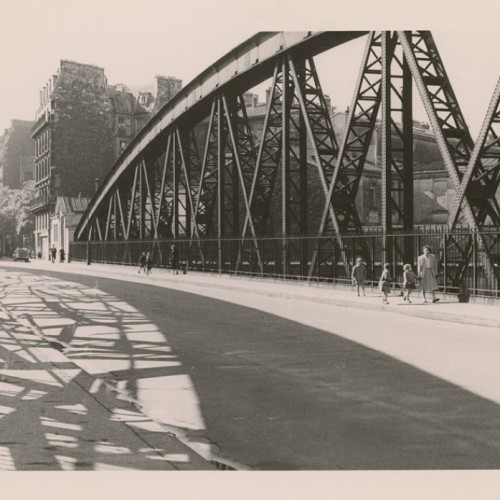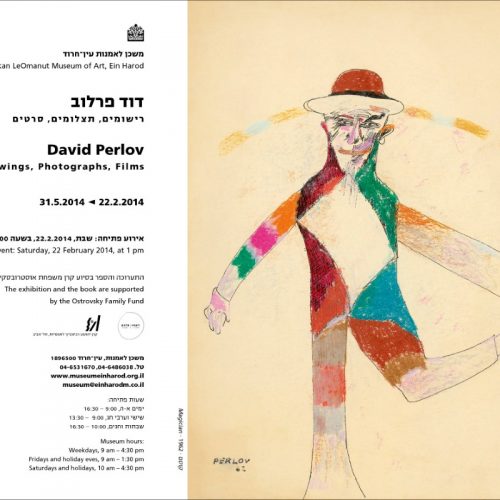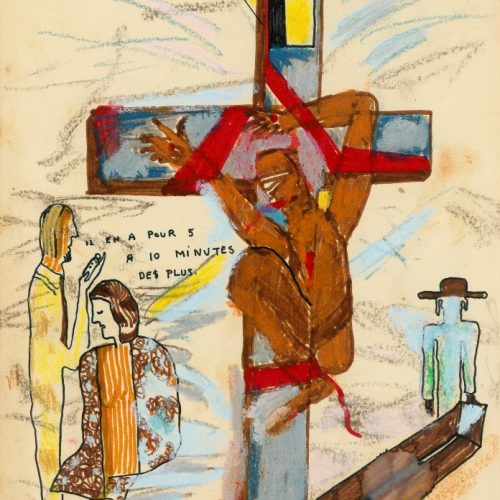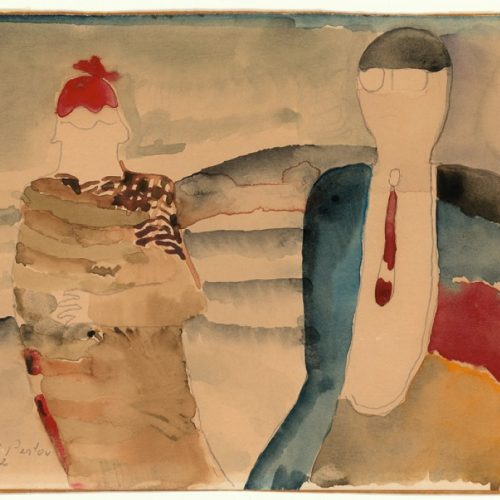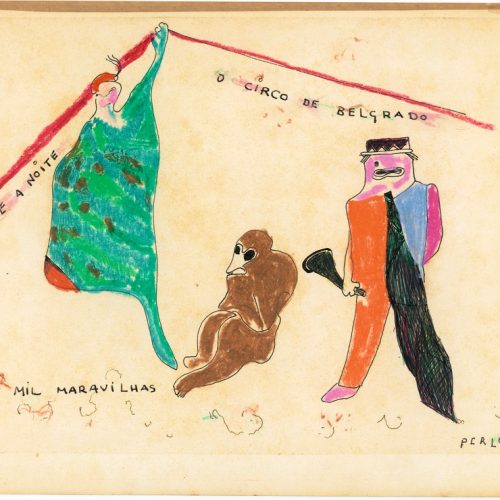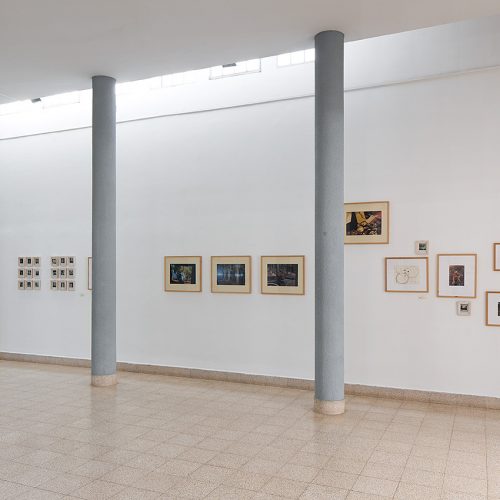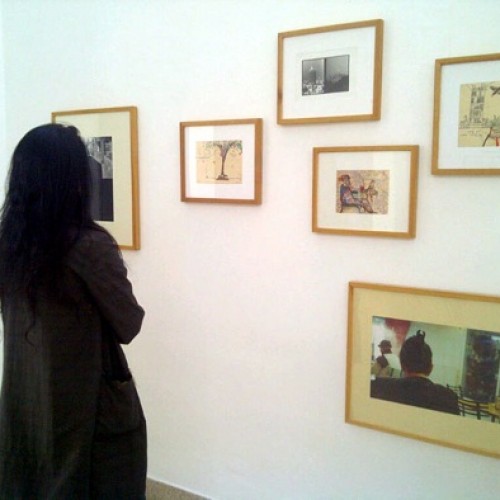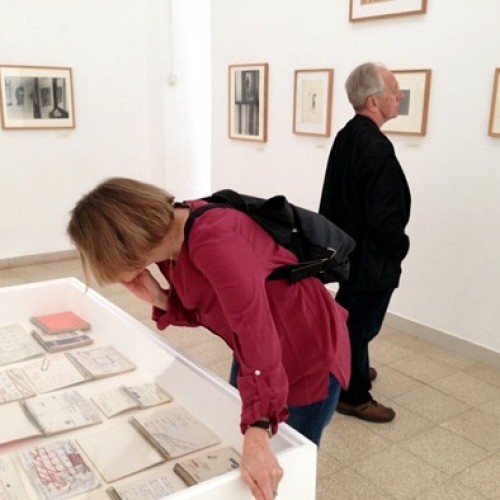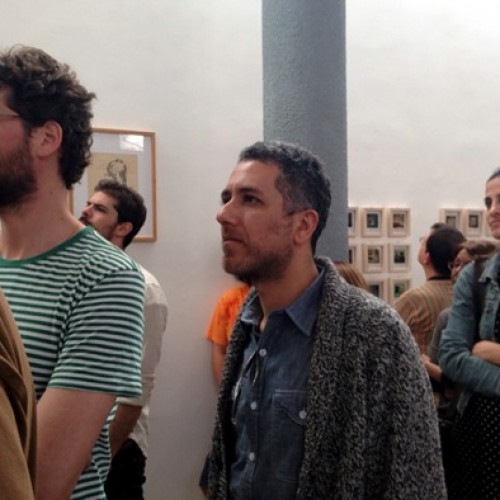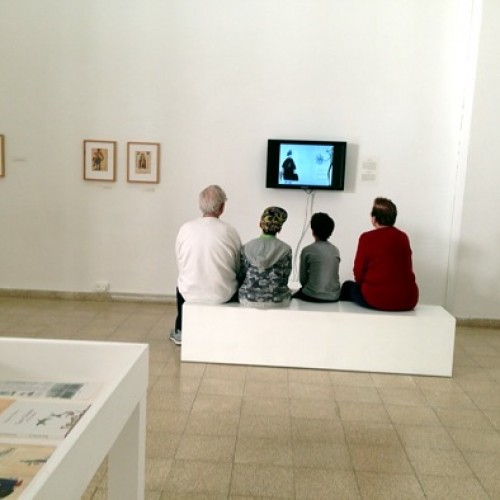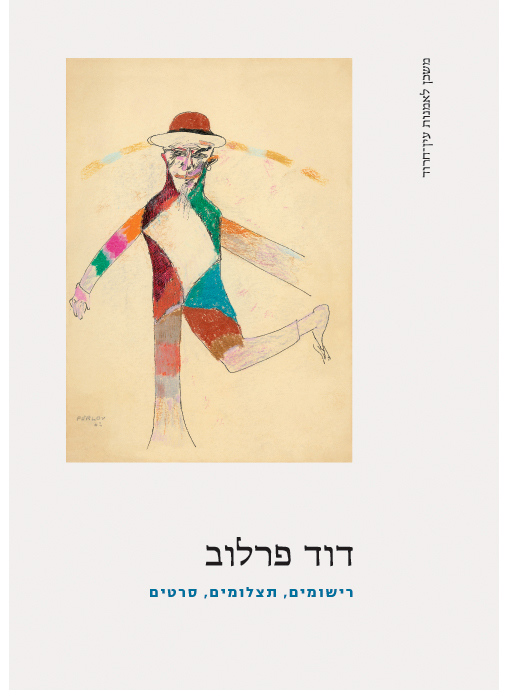
Ten years have passed since the death of David Perlov, whom many regard as the greatest film maker in Israel to this day. In the course of this decade, retrospectives of his films have been presented at international centers, and his film Diary has attained recognition as a milestone in cinema. Now, in this comprehensive book and in the exhibition it accompanies, the Mishkan LeOmanut Museum of Art, Ein Harod, adds a so-far-overlooked perspective: an exposition of the complex facets of Perlov’s oeuvre in fields tangential to his film making – for Perlov was painter and a photographer even before he began making films. Here we cast light for the first time on these complementary fields.
Both the exhibition and the book are composed as sequences of segments, as a weave of materials taken from various periods in Perlov’s life and from various contexts of his activity that reverberate through one another and infuse one another with in-depth meanings: his lectures that were recorded by students, radio interviews, letters, sections of storyboards, scenes from his films, documents, and numerous drawings, Polaroid photographs, black-and-white photographs, and color photographs. The side-by-side presentation of these various materials offers a sharper and clearer perspective on Perlov’s unique way of working: his absolute attentiveness to the means of articulation and his exceptional avoidance of the trap of “subjectivity”, so often a characteristic of personal expression and of psychological self-exposure. The sober and poetic lucidity of Perlov’s art and all its various layers is linked in the book to his life’s starting point, to decisions about his path that he made in his adolescence, to his uncompromising vitality as a man and as an artist – all of which mark out the inspiring position that is embodied in his constitutive film Diary. The intimacy and the estrangement in his work, its rawness and its broad aesthetic approach, its sensuality and its capacity to conceptualize – all these are reflected in the textual and visual materials that were (mostly) found in his estate, and they are presented in the exhibition and the book as a non-linear structure that reflects the routes of two different kinds of journey. At a deep level, Perlov’s personal return to the pain he had borne within him from the dawn of his life may have replenished his reflexive confrontation with the making of art and with the questions of its nature, its validity, and its affinity to life. It is at this point that Perlov’s journey comes into contact with the journeys of all those who have worked on the exhibition and the book. Our thanks for the privilege that has been given us to become acquainted with Perlov’s oeuvre, which is inexhaustible in its wealth and always vital in its spirit.
Heartfelt thanks to Vivian Ostrovsky and to the Ostrovsky Family Fund for the sponsorship they have given to the exhibition and the book, and thanks to the Yehoshua Rabinovich Foundation for the Arts, Tel Aviv, for its donation.


